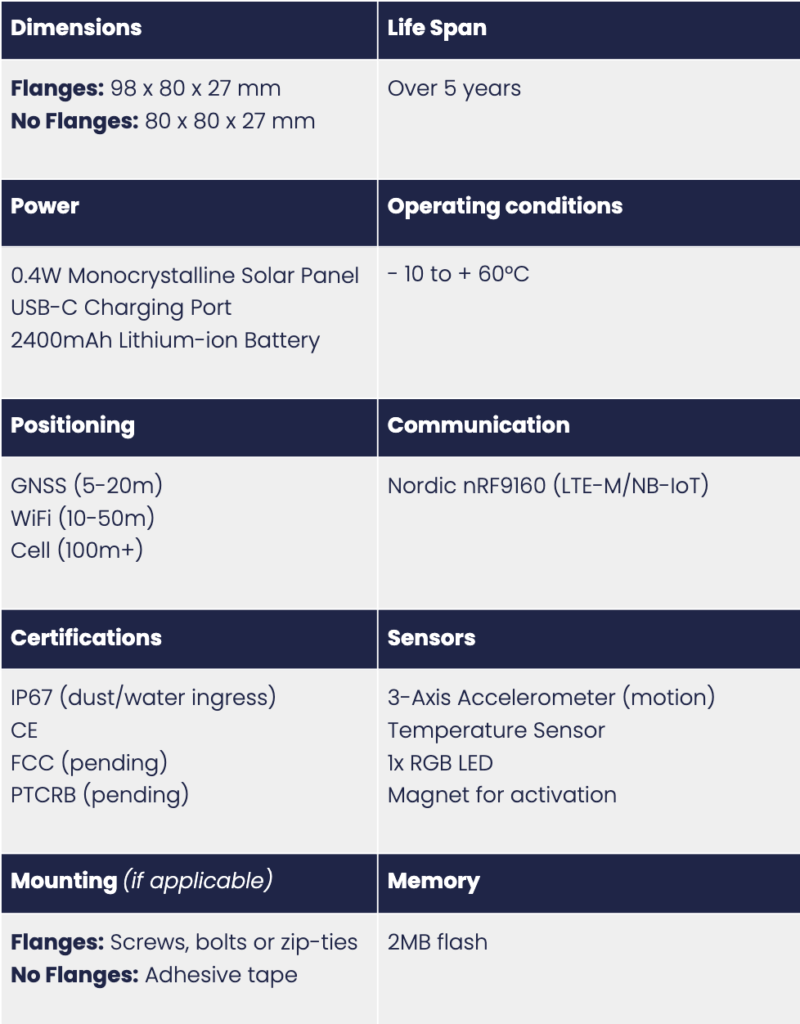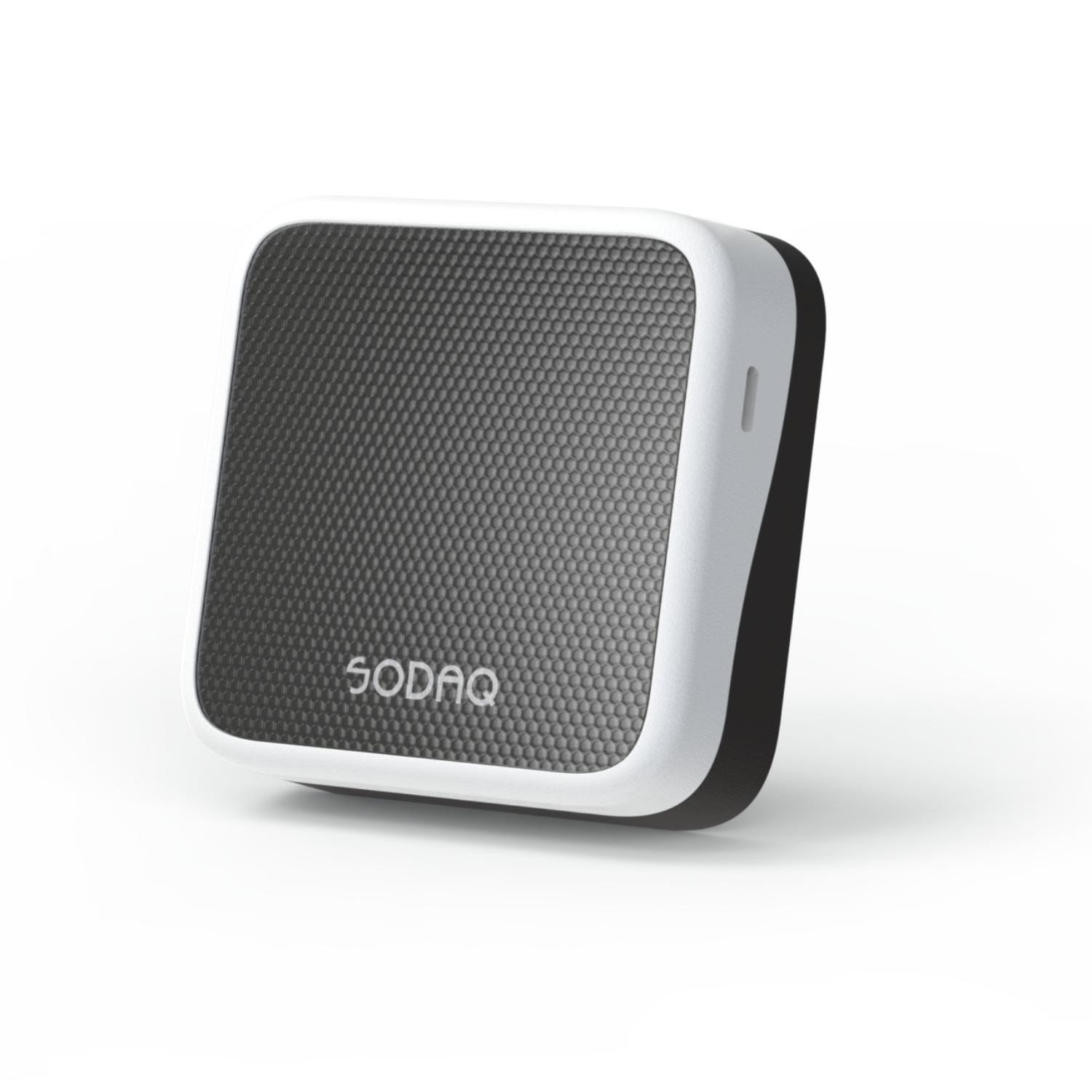Solar-powered Asset Tracking: The Next Generation of IoT sensors.
The Operational and Environmental challenges of powering tracking solutions
IoT asset trackers have become an indispensable part for many industries. However, tracking assets can become costly if a tracker runs out of battery and stops relaying data. Another challenge is replacing depleted batteries, particularly for large industries which need to allocate time and resources on maintaining thousands of trackers. Besides operational nuisance, this process is detrimental to the environment, especially considering that it can be avoided.
The number of IoT devices worldwide is growing rapidly; and so is the volume of batteries needed to facilitate this growth. With an expected 100 billion wasted AA-batteries in 2050, this is roughly equivalent to 300 olympic size swimming pools. Evidently, there is a growing environmental problem, one that IoT companies need to take responsibility for. But how do we deal with such an immense amount of toxic waste? The solution begins with creating low power devices that make more efficient use of the energy they have at their disposal. Then, as a result of the lower power requirements, it can function with the voltage generated by attaching a solar panel and harvesting (more) sustainable energy sources, such as sun or indoor lights.
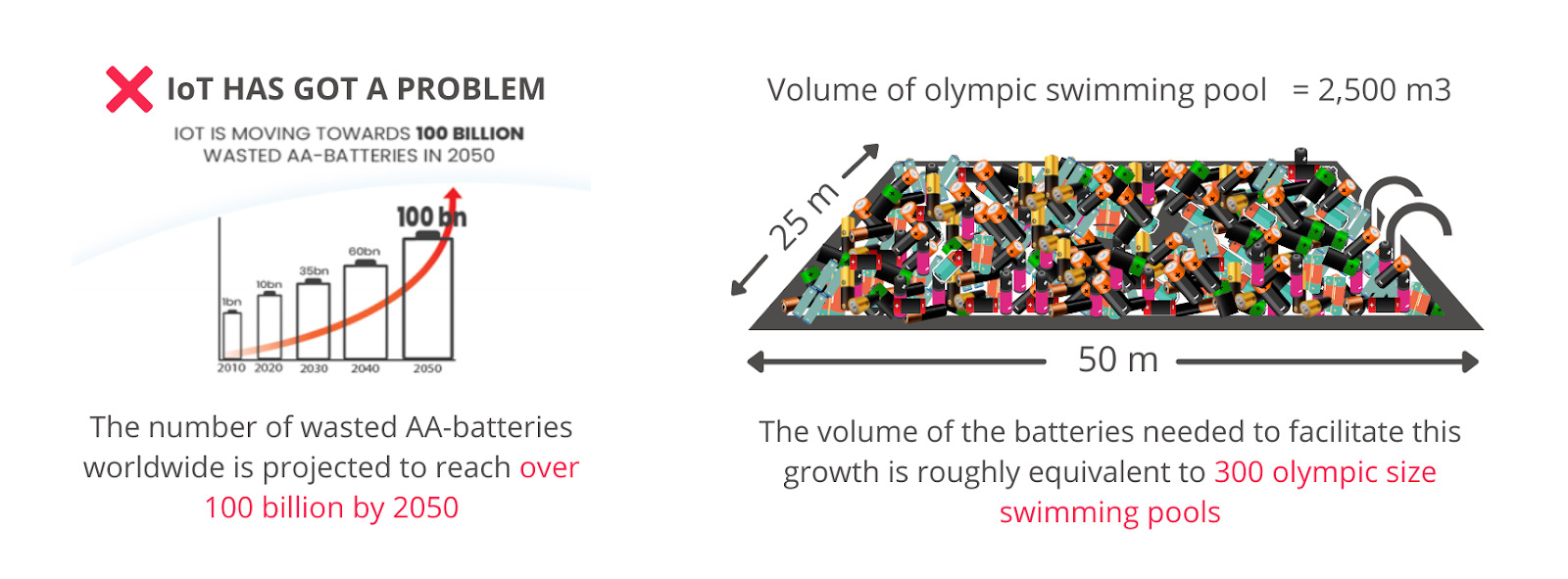
However, simply integrating a solar panel is not enough to build an effective solar-powered tracker. Typically, solar panels need to generate a certain level of power for the energy to be stored. Therefore, selecting an appropriately sized solar panel and matching it with a highly versatile configurable PMIC, (power management integrated circuits, like e-peas AEM10941), is essential for harvesting enough energy for the device function.
The solution
Utilizing the e-peas’ AEM10941, TRACK Solar is capable of operating on a 6.9 x 6.9 cm Monocrystalline Solar Panel. Harvested solar energy is stored in a 2400mAh lithium-ion battery, which enables the tracker to operate for up to a month without sunlight. The AEM10941 module plays an important role as it allows the TRACK SOLAR to harvest solar energy at very low voltages, resulting in a smaller solar panel and thus a smaller form factor. Additionally, the e-peas chip helps reduce the depth-of-discharge for the battery, leading to increased battery life and overall product longevity. TRACK Solar is designed to last for an estimated five years in the field, but it is likely to last much longer depending on the environmental conditions it is exposed to over its lifetime.
The result of the merging expertise of the two companies makes TRACK Solar capable of monitoring the location of non-powered objects for years on end, without the need for battery replacement. In addition to the hardware, TRACK users gain access to a cloud platform environment enabling them to view the location of assets, configure devices and administer over-the-air updates. Device configurations can be managed from SODAQ’s dashboard environment, whereby users can tailor the tracker to their use case by controlling motion triggered messages and the frequency at which messages are sent.
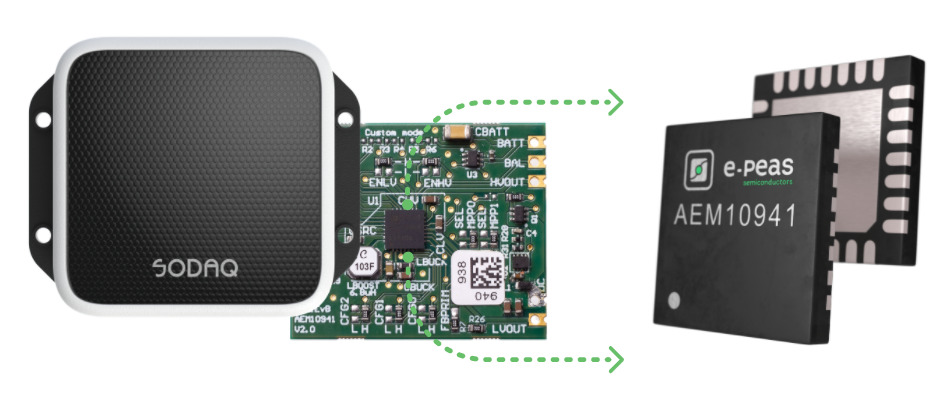
SODAQ TRACK Solar
Utilizing the e-peas’ AEM10941, TRACK Solar is capable of operating on a 6.9 x 6.9 cm Monocrystalline Solar Panel. Harvested solar energy is stored in a 2400mAh lithium-ion battery, which enables the tracker to operate for up to a month without sunlight. The AEM10941 module plays an important role as it allows the TRACK SOLAR to harvest solar energy at very low voltages, resulting in a smaller solar panel and thus a smaller form factor. Additionally, the e-peas chip helps reduce the depth-of-discharge for the battery, leading to increased battery life and overall product longevity. TRACK Solar is designed to last for an estimated five years in the field, but it is likely to last much longer depending on the environmental conditions it is exposed to over its lifetime.
The result of the merging expertise of the two companies makes TRACK Solar capable of monitoring the location of non-powered objects for years on end, without the need for battery replacement. In addition to the hardware, TRACK users gain access to a cloud platform environment enabling them to view the location of assets, configure devices and administer over-the-air updates. Device configurations can be managed from SODAQ’s dashboard environment, whereby users can tailor the tracker to their use case by controlling motion triggered messages and the frequency at which messages are sent.

Where can it be used? Example of existing use cases
TRACK Solar is ideal for any outdoor asset tracking use case where sunlight is available. Objects that can be tracked include equipment such as compressors, welding machines, generators and other equipment one might find on a construction site. Integrating SODAQ TRACK not only enables construction workers to find equipment faster, but allows operators to monitor the running hours of their equipment and identify opportunities to optimize workflow.

Airports are another operator that can benefit from this technology, particularly to alleviate the difficulties of monitoring ground support equipment. Integrating the tracker with dollies, tugs and refuelers allows airport operators to save time when trying to find these valuable assets on-site. Using pre-existing geofences, operators can keep overview of equipment and prevent assets from leaving their designated working zones.
"With the TRACK Solar we are already saving the equivalent of more than 50 non-rechargeable batteries per device over a 5 year lifespan, but what is even more exciting is that we are able to go batteryless by using e-peas AEM10941 and a supercapacitor that holds the charge from the solar panel in the moments where it isn't catching sunlight. This means we will go completely batteryless, having an unlimited number of charge cycles and therefore a much more sustainable device."
Ollie Smeenk, CEO SODAQ Tweet
5 benefits of using harvested energy in asset tracking:
- No battery changes for an estimated period of more than 5 years
- Reduced maintenance costs
- Reduced negative environmental impact
- Increased product lifetime
- Ideal for uses in environments with sunlight or indoor light
Technical specifications of SODAQ TRACK and AEM 10941
SODAQ TRACK Solar
AEM10941
e-peas’ solar energy harvesting IC solution – AEM10941 – is an integrated energy management circuit within SODAQ Track Solar that extracts DC power from up to 7-cell solar panels to simultaneously store energy in a rechargeable element and supply the system with two independent regulated voltages. The solar energy harvester AEM10941 allows to extend battery lifetime and ultimately eliminates the disposable battery energy storage element in a large range of wireless applications, such as industrial monitoring, geolocation, home automation, e-health monitoring and wireless sensor nodes.
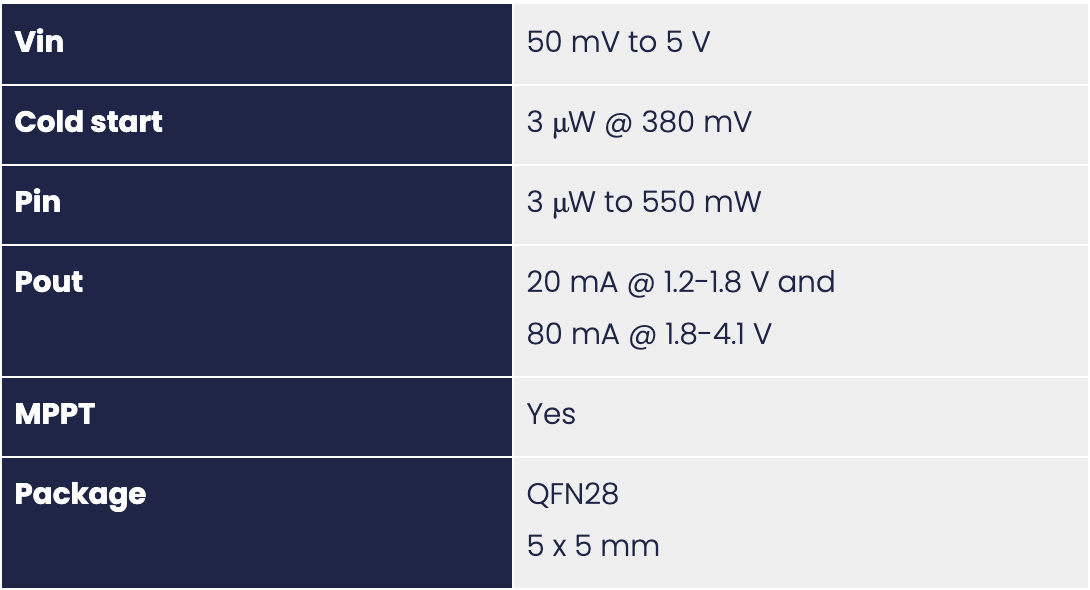
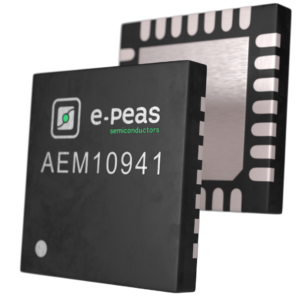
How to purchase SODAQ TRACK
TRACK Solar is a revolutionary B2B solution with an MOQ of 1,000 units. The device is completely agnostic to connectivity and platform providers.
To discuss opportunities for your business case, please get in touch with SODAQ’s sales consultants through sales@sodaq.com. A dedicated team is ready to support in identifying key business case components, getting started through a pilot service ensuring the right product fit and guidance on technical integration of the solution.
About e-peas
e-peas develops and markets disruptive ultra-low power semiconductor technology. This enables industrial and IoT wireless product designers to substantially extend battery lifespans and eliminate the heavy call-out costs of replacing batteries, without in any way compromising on reliability. Relying on 15 years of research and patented intellectual property, the company’s products increase the amount of harvested energy and drastically reduce the energy consumption of all power consuming blocks within wireless sensor nodes. Headquartered in Mont-Saint-Guibert, Belgium, with additional offices in Switzerland and the USA, e-peas offers a portfolio of energy harvesting power management interface ICs, microcontrollers and sensor solutions.
About SODAQ
SODAQ is a leader in low-power sensing and tracking solutions. Since 2012 the company has been a pioneer in the field of creating autonomous devices using low-power wide area networking and energy harvesting. SODAQ provides a range of asset tracking solutions for businesses as well as offering custom hardware, software and industrial design development as a service.
SODAQ is motivated by a vision of seeing a world without batteries and aims to be the primary driver of sustainability within the Internet of Things industry.
